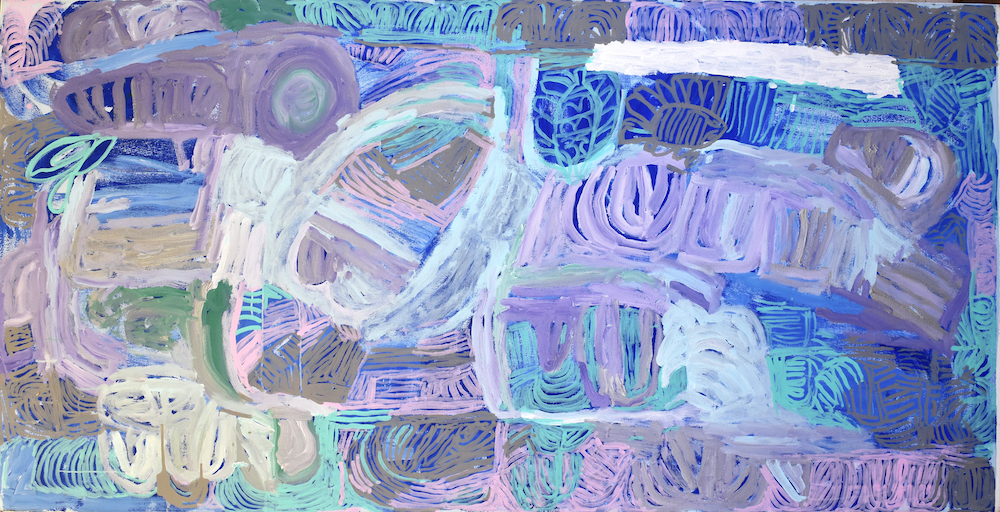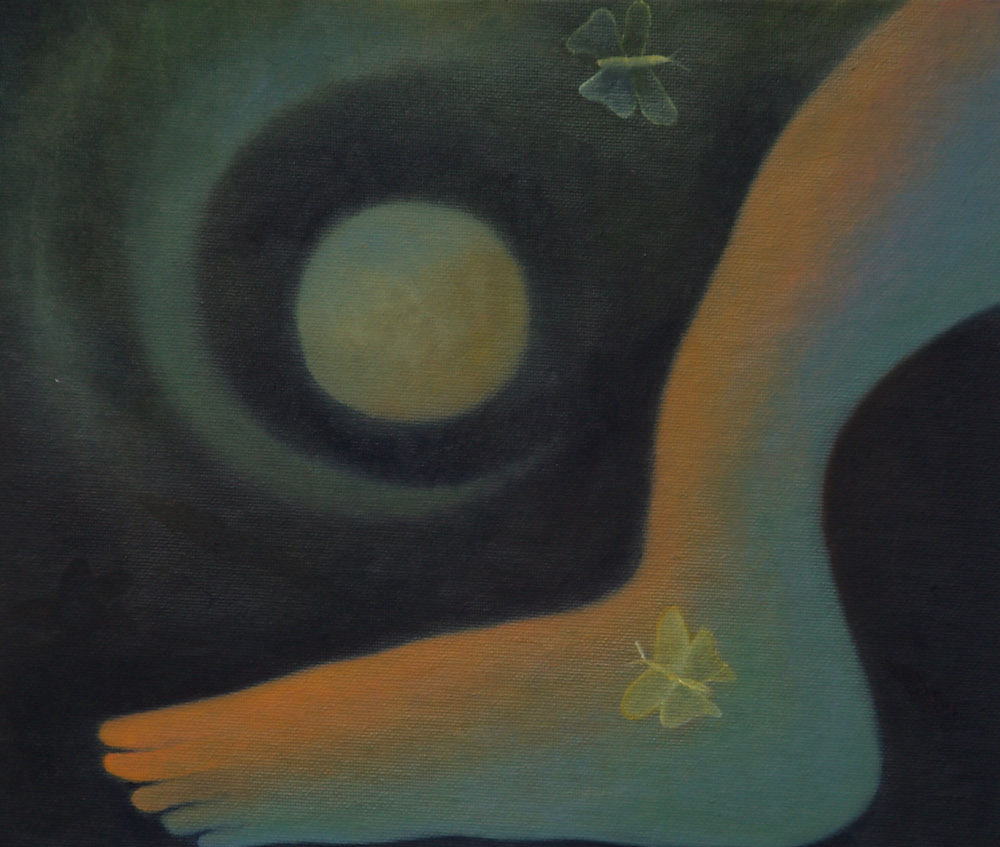Perth Festival’s aquatic theme is so richly portrayed at Lawrence Wilson Art Gallery that it almost feels alive, observes Jaimi Wright.
Sibling exhibitions sing enchanting stories
17 February 2022
- Reading time • 8 minutesVisual Art
More like this
- A walk with Tina Stefanou
- A blaze of glorious people
- Diving into the gothic world of Erin Coates
‘Portals of Love and Loss’, Sonia Kurarra, curated by Emilia Galatis in collaboration with Mangkaja Arts ·
‘Ariel’s Song’, Audrey Greenhalgh, Luisa Hansal, Jess Tan, and Wade Taylor, curated by Gemma Weston ·
Lawrence Wilson Art Gallery ·
Lawrence Wilson Art Gallery (LWAG) is currently host to two sisters of the water. Sitting across the hall from one another, they sing the same song in different and yet complementary tones.
It is a song of aquatic rhythms, of life and energy, of loss and change, and of the very human relationships between these things. In keeping with the Perth Festival theme Wardan (ocean), “Portals of Love and Loss” and “Ariel’s Song” take the viewer on journeys inspired by bodies of water, with themes so rich they feel alive.
Curated by Emilia Galatis in collaboration with Mangkaja Arts, “Portals Of Love and Loss” by Sonia Kurarra is the first of the exhibitions I encountered at the gallery. It’s the first ever solo show of the senior Walmajarri artist, who has been creating prolifically since the mid-90s. Currently operating out of an aged care facility in Fitzroy Crossing, Kurarra is one of Western Australia’s most successful First Nations artists.
For this exhibition, Kurarra takes inspiration from Martuwarra (Fitzroy River), its imagery drawn from a lifetime of watching the river and the personal connection she has to its ebbs and flows. The result is a touching journey, in acrylic and ink, through the respect and passion that Kurarra has for this force of nature, and her concern for its future.

Take, for example, three works in acrylic on canvas all titled Martuwarra at Noonkanbah (2021). Each long, rectangular canvas forms the edge of a triangle on the wall of the gallery, mimicking the movement of Martuwarra’s waters. The river, depicted in stark lines and earthy tones, is effectively and knowledgeably mapped by Kurarra, right down to the creatures that call its banks home.
Her series of six works in ink and paper simply titled Martuwarra (2019) is a far more intimate depiction, but no less powerful. Kurarra uses blue, red and black inks to reveal the delicate topography of Martuwarra’s floodwaters and small ponds, the energy in her drawings bringing to the surface both the power and beauty of its life cycles.
Martuwarra (2022) in acrylic and polycarbonate is one of Kurarra’s more ingenious works. The sheets of polycarbonate are suspended from the ceiling, one in front of the other, such that, from a certain perspective, her fine lines in gold, white, and pink are superimposed over one another. The positioning of this artwork gives depth to the river, both physically and emotionally.
The river’s future is uncertain due to human intervention. Through Martuwarra Kurarra asks, “how will we appreciate the depth of its beauty when it is gone?”

Curated by Gemma Weston, the next exhibition,“Ariel’s Song”, draws its themes from a famous passage from William Shakespeare’s The Tempest:
Full fathom five thy father lies;
Of his bones are coral made;
Those are pearls that were his eyes;
Nothing of him that doth fade;
But doth suffer a sea change
Into something rich and strange
With this prose in mind, contemporary artists Luisa Hansal, Jess Tan, and Wade Taylor form a discourse with Australian landscape painter Audrey Greenhalgh, specifically a 1994 survey exhibition of her works of the ocean. Brought together by Weston, these artists draw lines between different time periods, dark and stormy coastal themes, and the hidden poetry within the world around us.
A conversation is struck between the work of Greenhalgh and Taylor on the far-right wall. Greenhalgh calls out in oils with Jade in the window (1956), and Taylor answers in oils with Blue Crescent (2022), White Hills (2022), and Beach Road (2022).
Greenhalgh, in the warm, dark hues typical of her style, depicts a jade plant from the window of a first-floor building. Her clouds swirl warm and heavy like the rhythms of the sea below.

Wade, on the other hand, chooses subjects like a water tower and a suburban carpark, and takes them to the surreal, with low perspectives and dark shadows. Each artist’s work is a fascinating ballad to the mundane, one lyrical, and one bizarre.
Hansal responds to Greenhalgh’s pieces with a pensive series of works in oil on canvas board. leafworm (2021) answers Greenhalgh’s stormy tones with a dark, yet childlike innocence. A ghostly foot, painted in an eerie orange and blue light, sits against a black background with a swirling moon as moths fly above and below. These objects exist in a liminal abyss, evidence of a strange and yet engaging kind of life.
The installation essence of sand dollar (2021), by Tan, is a playful nod to the shapes of coastal ecosystems. Tan uses a variety of materials including eggshells, cherry pips, longan seeds, custard apple seeds, and clay left out in the rain and then fired, to create small almost-shrines that resemble treasures found in tidal pools. Tan transports the viewer to the coast by intermingling textures and light, making you look closer, as you might do while walking along the shore.
Singing together, “Portals of Love and Loss” and “Ariel’s Song” tell beautiful stories held by bodies of water, and journeys to far away places. Be sure to seek these sisters out for a magical experience.
Pictured top: Sonia Kurarra, ‘Martuwarra’, 2021, acrylic pen and paint on canvas, 180 x 94.5cm. Courtesy the artist and Mangkaja Arts Resource Agency
For the latest news and reviews, subscribe to Seesaw’s fortnightly free e-magazine here.
Like what you're reading? Support Seesaw.






